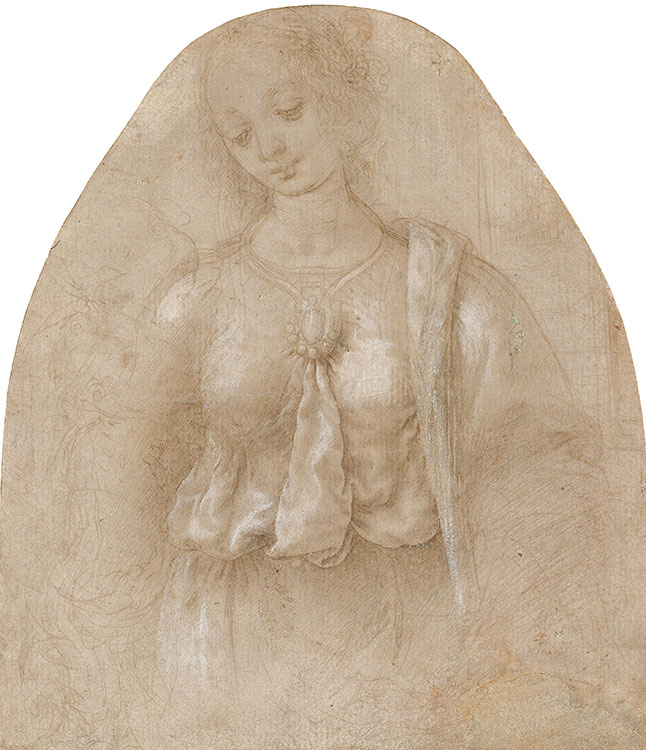
A much-celebrated example of Florentine draftsmanship of the fifteenth century, Verrocchio’s Madonna with the Brooch demonstrates a range of techniques and artistic interests. The artist first sketched the Virgin and Christ Child in silverpoint, establishing the composition with a light touch and making several small adjustments in the process. Focusing his attention on the Virgin, he used leadpoint to reinforce contours and adjust the figure’s eyes, neck, and brooch. Picking up the brush, Verrocchio then skillfully described the fall of light over the Virgin’s robes, adding brown wash for shadows and opaque white watercolor for highlights. These painterly passages add a convincing sense of plasticity and volume to the more immediate and spontaneous metalpoint sketch.
Andrea del Verrocchio
Italian, 1435–1488
Madonna with the Brooch, ca. 1470–74
Silverpoint and leadpoint with light-brown wash, heightened with white, on light-gray prepared paper
Kupferstich-Kabinett, Staatliche Kunstsammlungen Dresden, INV. NO. C 32
© Kupferstich-Kabinett, Staatliche Kunstsammlungen Dresden
Photo: Herbert Boswank
John Marciari, Charles W. Engelhard Curator and Department Head
Andrea del Verrocchio is best known to most people today as having been the teacher of Leonardo da Vinci, but he was in his own right one of the most influential and versatile artists working in fifteenth-century Italy. He was a sculptor, a painter, and an exquisite draftsman. This densely worked sheet attests to his powers in the medium. It began as a quick sketch in silverpoint, in which the artist laid out the composition of the Madonna and child. He then used a second metal stylus, probably leadpoint, to refine the details of the Virgin’s face, dress, and jewel, leaving the Christ child as a little more than a sketchy outline. Ultimately, however, the purpose of this drawing was to study the volumes of the Madonna’s drapery, and to that end Verrocchio used brown wash and white heightening to bring the fabric into high relief. Finally, he added further hatching to deepen the shadows and enhance the sharp chiaroscuro.
The sheet was probably made in the early 1470s as a preparatory study for a relatively small-scale devotional painting, but the power of the drawing was such that it remained in the workshop and served as the basis for at least seven different paintings by Verrocchio and his pupils. This is, in fact, precisely the sort of work by Verrocchio that would have inspired Leonardo, and it is little surprise that the study was long believed to be by Leonardo himself rather than his master.
